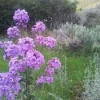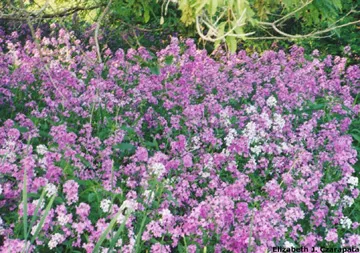X
CONTACT US
Great Lakes Center, SAMC 319
SUNY Buffalo State
1300 Elmwood Ave., Buffalo, NY 14222
wnyprism@buffalostate.edu
(716) 878.4708
SUBSCRIBE TO LISTSERV
FOLLOW US
CONTACT
Dames Rocket
COMMON NAME:
Dames rocketSCIENTIFIC NAME:
Hesperis matronalisORIGIN:
EurasiaDESCRIPTION:
Dames rocket is a flowering biennial that was introduced in North America in the 1600s. During its first year, it grows as a basal rosette. In its second year, its flowering stem grows up to 4 ft. tall. Dames rocket has alternate, lance-shaped leaves with serrate margins. It flowers from May through July, producing clusters of flowers that vary in color from purple to white. It is similar in appearance to the native summer phlox. However, phlox have 5-petaled flowers while dames rockets have 4 petals.HABITAT:
Dames rocket grows in disturbed areas, woodlands, roadsides and meadows. It prefers partial sun and moist soils. It has now been introduced in all northern parts of the United States.THREAT:
Dames rocket is sold in nurseries and its seeds are included in “wildflower” mixes. Its use as an ornamental is likely how it spread throughout North America. This plant grows very aggressively, by producing large amount of seeds and shading out native vegetation.MANAGEMENT:
Dames rocket can be managed by cutting off the flower heads and disposing of them in landfill-bound garbage bags, to ensure that they do not produce seed. However, as a perennial, this won’t reduce the current infestation. This plant can also be treated with herbicides. An ideal time to use herbicides is in the early spring or late fall, when most native plants are dormant, because the rosettes of dames rocket stay green year round. Smaller populations can be hand-pulled.
WNY PRISM PRIORITY:
Tier 4 - Local Control
ADDITIONAL RESOURCES:
There are no additional resources at this time.NYS Prohibited and Regulated Species - Part 575:
PATHWAYS OF INVASION:
REGIONAL DISTRIBUTION:
Widespread




